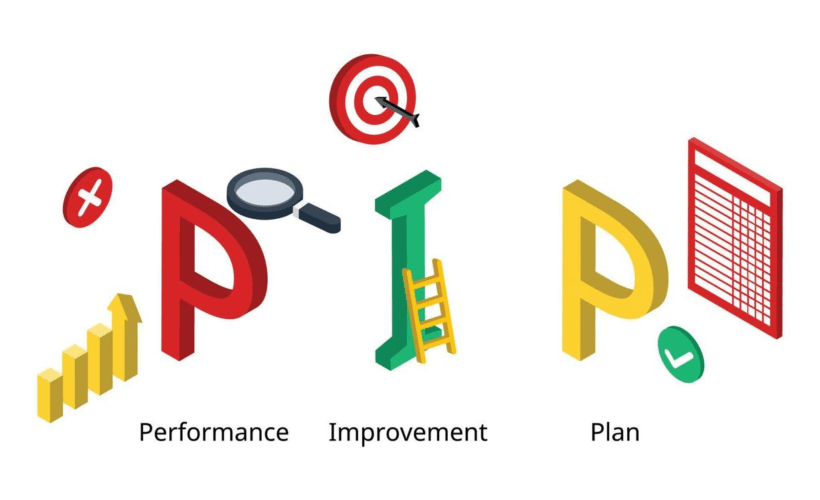
Keegan Furtado highlights how Performance Improvement Plans, when done right, turn challenges into opportunities
You can always tell when someone has been put on a Performance Improvement Plan (PIP). They suddenly start arriving early, attending every meeting, and smiling a little too widely at their manager, as if enthusiasm alone might erase the spreadsheet of doom.
Colleagues exchange sympathetic glances, HR starts using words like ‘supportive process’, and the person in question develops the haunted look of someone who has read the fine print on their future.
It is one of those phrases that can make even the most confident professional break into a cold sweat: “We are putting you on a PIP.” For many, it sounds less like a performance plan and more like a countdown timer.
Yet the original intention was far nobler: to help employees identify gaps, improve performance, and succeed. Somewhere along the way, that purpose was lost in translation.
When the Plan Loses the Plot
Let us be honest − PIPs are frequently misused. What should be a coaching framework often turns into a countdown clock. Instead of providing clarity and support, they are used as administrative cover for decisions that have already been made.
Managers sometimes use a PIP to avoid the uncomfortable conversation that should have taken place months earlier. HR, caught between policy and empathy, may quietly go along because ‘that is the process.’ Meanwhile, the employee, blindsided and demoralised, is suddenly presented with a 30-day improvement plan that feels less like guidance and more like a farewell note written in bullet points.
When that happens, everyone loses. The employee gives up before the plan begins. The manager avoids accountability. The credibility of the HR team takes a hit. The very tool meant to build trust ends up eroding it.
What a PIP Should Be
Used correctly, a Performance Improvement Plan can be a powerful act of leadership. It can provide direction, restore confidence, and rebuild trust. The key is to treat it not as a punishment but as a partnership.
1. Start with a Conversation, Not a Document: A PIP should never appear out of nowhere. The manager and employee must first have an open, honest discussion about what has gone wrong and what support is needed. Often, the root cause is not lack of effort but lack of clarity, resources, or feedback.
2. Be Clear, Not Cryptic
‘Improve communication’ is not a measurable goal; it is a horoscope. The plan should be concrete, such as “Send weekly project updates by Friday” or “Conduct client follow-ups within 48 hours.” Vagueness only breeds confusion and resentment.
3. Coach, Not Catch
The purpose of a PIP is not to trap someone into failure but to guide them towards success. Managers must act as coaches, offering consistent feedback and recognising progress, not saving all comments for the final review meeting.
4. Track Progress Together
Regular check-ins should feel like progress reviews, not interrogations. Celebrate improvements. Address hurdles. Keep the focus on outcomes, not blame.
5. Decide with Fairness, Not Surprise
At the end of the PIP, there should be no shock announcements. Whether the outcome is improvement, redeployment, or separation, the employee should feel the process was transparent and humane.
Why it Matters
A poorly executed PIP damages more than one individual. It damages trust across the entire organisation. Employees start to whisper that ‘PIP’ really means ‘exit’. Managers begin to see performance management as a box-ticking exercise. HR loses its credibility as a fair broker of growth and accountability.
When done right, however, a PIP reinforces a culture of fairness and feedback. It signals that the organisation is willing to invest in its people, even when things go wrong. It can transform a struggling employee into a confident contributor, or at least help them find a better-fit role with dignity intact.
The Role of HR: The Anchor, not the Executioner
For HR, the goal is to reclaim the PIP from the realm of fear. HR should ensure that managers do not use it as an avoidance strategy, but as a developmental tool. That means training leaders to give feedback early, to document support, and to intervene before problems snowball.
HR must also act as the conscience of the process, guarding against bias, ensuring fairness, and maintaining empathy. After all, performance improvement is not about paperwork; it is about people.
The Bottom Line
A Performance Improvement Plan is not a guillotine with a grace period. It is a structured opportunity to realign expectations, rebuild capability, and recover confidence. The difference lies entirely in intent.
Used with integrity, a PIP can become a lifeline: an honest, structured chance to turn things around. Used as a shortcut to termination, it is little more than theatre.
Ultimately, the success of a PIP depends on one simple principle. People improve when they feel supported, not when they feel watched.
Handle it with empathy, consistency, and genuine purpose, and you may just find that a plan designed for ‘improvement’ finally lives up to its name
The writer is a Deputy General Manager – Talent Development and Learning at Digitide Solutions and is a Certified Practitioner and Life Coach Email: keegan1694@gmail.com





